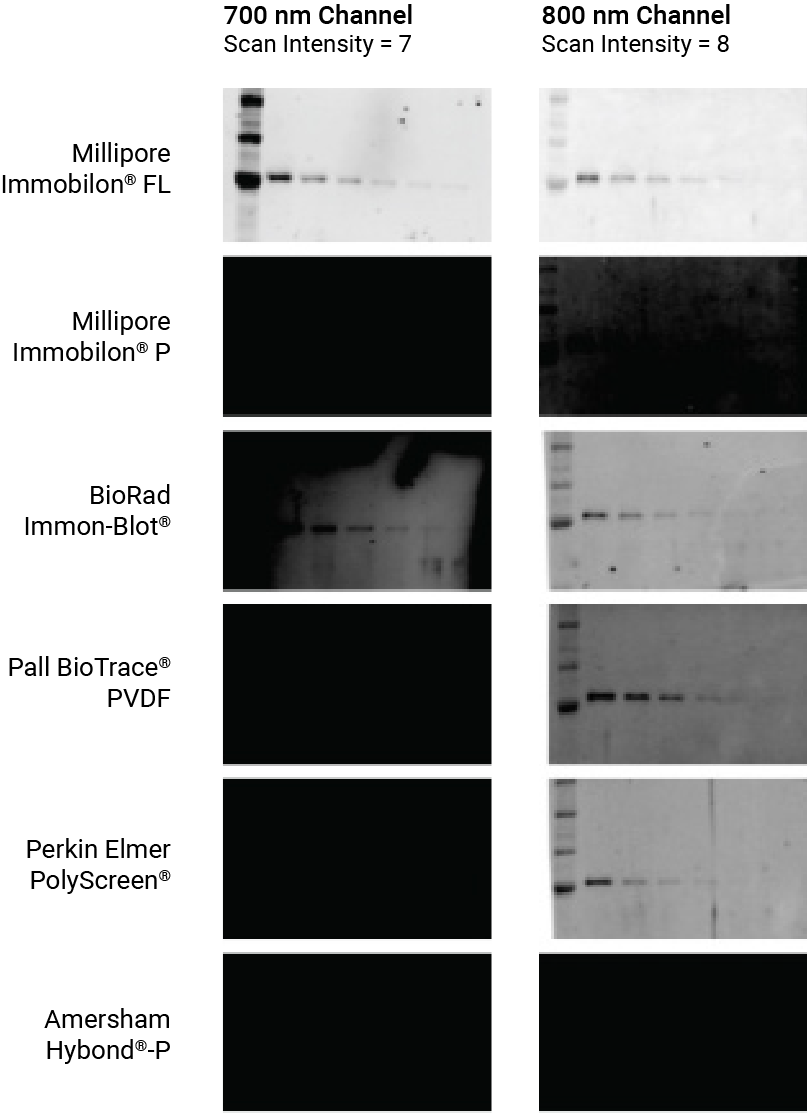Choosing the right membrane for your experiment is target dependent and therefore extremely important. Generally speaking, there are two different types of membranes that you can use in protein transfer: nitrocellulose and polyvinylidene fluoride (PVDF). Both membranes work best under specific experimental conditions. Before continuing with your research, make sure that you understand their respective advantages and disadvantages.
Nitrocellulose Membranes
Nitrocellulose membranes typically have a lower protein binding capacity (80-100 µg of protein/cm2) than PVDF membranes. Pore sizes can be either 0.2 µm or 0.45 µm. The 0.45 µm pore membrane is used for most targets because the 0.2 membrane is more efficient in binding smaller proteins. However, you can often switch when probing for ones that are less than 15 kDa. Additionally, transfer buffer must contain methanol, and it is important to note that nitrocellulose membranes can be fragile. Nitrocellulose is well suited for both chemiluminescent and fluorescent detection methods.
Polyvinylidene Fluoride (PVDF) Membranes
Compared to nitrocellulose membranes, PVDF has a higher protein binding capacity (150-200 µg of protein/cm2). However, both membranes are comparable in pore size (0.2 µm or 0.45 µm). PVDF does not necessarily require a transfer buffer with methanol, but it must be pre-wetted with it. The PVDF membrane is less fragile and is consequently recommended for experiments that utilize stripping and re-probing of the membrane.
Detection Using PVDF and Nitrocellulose

While it works well for chemiluminescence and fluorescence detection methods, you should select low-fluorescence PVDF membranes when performing fluorescent Western blots. This will help you avoid high background due to the autofluorescence of standard PVDF membranes. To check for autofluorescence and background, cut a small membrane sample and image it both wet and dry.
How can your Western blot performance be affected by your choice of membrane and other variables? Find out in the “Good Westerns Gone Bad: Tips to Make NIR Western Blots Great” application guide.
PVDF vs. Nitrocellulose Membranes
Choosing the best Western blot membrane for your experiment depends on several factors including your target(s) and detection method. We encourage you to visit our Reagent Store to learn more about PVDF vs. nitrocellulose membranes. If you have any questions or concerns, then don't hesitate to reach out at your convenience. We're always willing to support your research however we can.
Powered by Froala Editor